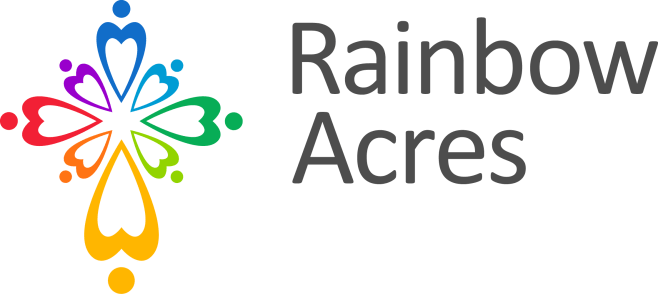By Lisa Page, Animal Science Educator
The summer heat is still hanging on and things are cooking at the Rainbow Acres barn! Despite the warm temperatures, the Ranchers continue to provide daily care for the animals which includes feeding, cleaning and filling water troughs, picking up manure in the stalls, sweeping the barn, and organizing and cleaning tack. We’ve also increased our equine bathing regimen as the horses (and the Ranchers) seem to enjoy cooling off on hot days!
As an agriculture instructor, my main goal is for my students to learn why agriculture is important to them and how it affects every aspect of our daily lives. In order to eat, have clothes to wear and shelter to live in – we need agriculture! The Ranchers are fortunate to live in a community where they can have first-hand experience with growing and harvesting crops in the greenhouses as well as interacting and caring for horses and many other types of livestock. This hands-on experience is invaluable not only to the educational learning process, but the sense of being part of a team that works together to take care of the land and animals that God has provided for us.
Program expanded this year to include “production livestock”
Last spring, three Ranchers spent several months raising lambs that they showed in the Verde Valley Fair in May. While many Ranchers enter crafts and textiles in the fair, this was the first time they had entered and shown livestock projects. Typically, livestock shows are limited to those students in 4-H and high school FFA. I felt it was important that our Ranchers were offered the same opportunities and benefits that come from raising and showing livestock, despite being out of high school.
The Verde Valley Fair board was incredibly supportive and welcoming of the idea and created an “open” class for our Ranchers to compete in. Each Rancher was responsible for feeding, caring for, and working with their lambs to prepare them for the show ring. In addition to the hands on work, Ranchers attended several classes where they learned about show lamb feeding and nutrition, how to calculate weekly weight gain, how to shear and fit their lambs for show, and proper show ring etiquette as well as memorizing many lamb-related facts in order to be prepared for the judges questions.
While I was a bit concerned in the beginning about how the Ranchers would handle the fact that their lambs were being raised to ultimately be lamb chops one day (this was made clear from the beginning), I am proud to say all 3 Ranchers handled parting with their lambs in such a caring and mature way. It was quite a bit of work but in the end, it was all worth it and hopefully they will be showing livestock again in next year’s fair.
Afternoons feature classes on wide range of horse-related topics for adults with disabilities
Most of our hands-on work with the animals happens in the morning when it’s a bit cooler. In the hotter afternoon, we utilize the air-conditioned barn classroom for Animal Science and Equine Science classes four days a week. These classes are part of our new “Rainbow Academy” which is still in its first year. Rainbow Academy features structured college-like semester schedules offering over 30 fun and engaging classes that the Ranchers can choose to participate in. Both animal classes utilize a high school level textbook from which we base the curriculum and create presentations and hands-on activities that will help Ranchers retain the information.
For example, the Animal Science class has covered topics on the domestication of animals, safety and biosecurity on the farm, environmental effects of animal agriculture, animal nutrition and feeding, biotechnology and animal breeding systems. The Equine Science class has covered topics including origins and domestication of the horse, equine vocabulary and terms, coat colors, gaits of the horse, equine genetics, equine nutrition and health, first aid, diseases and anatomy.
Presentations from animal handlers, caretakers expand the experience
In addition to classroom instruction, we have had several community members give presentations on topics related to animal science including large cat nutritionists and caretakers from Out of Africa (a local drive-through safari). University of Arizona Cooperative Extension Rangeland specialists have talked to the Ranchers about forage utilization and how different species of livestock graze in different ways. We also hosted a presentation on Arizona wildlife that included bones and pelts to demonstrate the differences in carnivore and herbivore bone structure and how these features allowed the animals to survive. And we recently took the Ranchers on a visit to a local grass-fed beef ranch that utilizes sustainable and holistic pasture management practices to maximize beef quality while minimizing the impact on the environment and resources, as well as natural horsemanship demonstrations by a local trainer and also a presentation on beekeeping. These folks are passionate about what they do and the Ranchers enjoy learning about many different topics.
The Ranchers are currently working on preparing equine presentations for Family & Friends Weekend this October, during which they will share knowledge they have gained in their equine science classes. If you want to know why cattle ranchers use livestock brands, how a horse digests food, or why a donkey’s ears are so big . . . you’ll have to wait until Family & Friends Weekend!
I feel so fortunate every day to be able to share the incredible and important world of agriculture with the Ranchers, and to be a part of their learning experience. I’ve always said that animals are the best teachers – sometimes they teach us lessons that we didn’t know we needed! Honestly, most days I feel like I learned more from the Ranchers than they learned from me, and that is truly a blessing! Until next time . . . Happy Trails!

